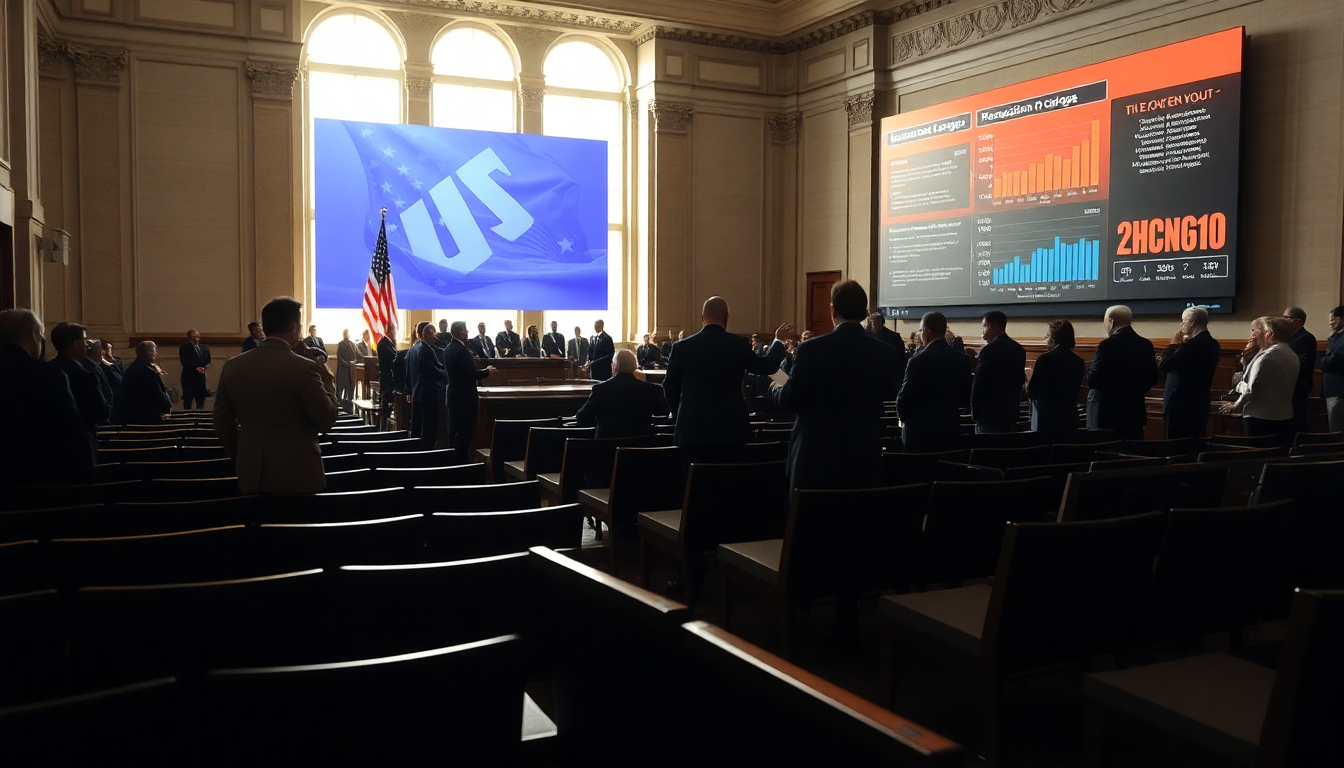Table of Contents
In a notable move that has caught the attention of both political insiders and everyday citizens, House Speaker Mike Johnson has successfully pushed a rescissions package through Congress, cutting spending by a whopping $9 billion. This legislation, which squeaked by with a nail-biting vote of 216 to 213 in the early hours of Friday, represents a crucial moment for the GOP as they strive to rein in federal spending. But what does this mean for the future of government financing and for the average American?
What’s in the Rescissions Package?
The rescissions package is a unique legislative tool that allows lawmakers to retract previously allocated funds. In this case, the bill blocks $8 billion set aside for the U.S. Agency for International Development (USAID) and $1 billion meant for the Corporation for Public Broadcasting. Originally earmarked for the fiscal year 2025, this funding is being redirected as part of the GOP’s commitment to limit what they view as excessive government spending on international programs. But is cutting these funds really the solution?
House Majority Leader Steve Scalise made a point during the debate that while these cuts won’t solve all fiscal challenges, they’re a step in the right direction toward better managing overall expenditure. This echoes the party’s core belief in fiscal conservatism and reflects a strategy aimed at appealing to voters who are increasingly wary about government spending.
Interestingly, rescissions packages are quite rare; the last one signed into law was over two decades ago! This historical context underscores just how significant this legislative success is for the GOP, showcasing their capability to maneuver through a complex political landscape. Remember, lawmakers had only 45 days to act on these proposed cuts after they arrived from the White House!
Political Reactions: A Divided House
This legislative win has sparked a whirlwind of reactions across party lines. Republicans are celebrating it as a major victory, arguing that it cuts taxpayer money from what they label “woke” initiatives abroad. But the Democrats aren’t backing down; they criticize the GOP for undermining essential foreign aid programs, framing these cuts as harmful to vital international support. Does this push and pull reflect deeper ideological divides within American politics?
During the debate, Democrats tried to pivot the discussion towards the ongoing scrutiny surrounding Jeffrey Epstein, demanding the release of related documents. Representative Jim McGovern didn’t hold back, accusing Republicans of prioritizing political gain over justice for Epstein’s victims—a clear indication of the contentious atmosphere surrounding these negotiations.
Despite these distractions, Johnson kept his eye on the prize, emphasizing the need for transparency while ensuring the rescissions package passed. This dual approach showcases the GOP’s strategy to balance internal party dynamics while addressing critiques from the opposition. But will this strategy hold up under pressure?
What’s Next? Looking Ahead at Fiscal Policies
With President Trump gearing up to sign the rescissions package, all eyes are on the GOP’s broader fiscal strategy, which will soon be under intense scrutiny. As budget challenges loom and debates over funding priorities heat up, navigating the path forward will be no easy feat. Can the party maintain unity and effectively communicate their fiscal policies to their constituents in the lead-up to the next election cycle?
Moreover, the implications of this package are far-reaching; it sets a precedent for how future spending decisions might be approached. The GOP’s focus on fiscal responsibility could strike a chord with voters, especially in an era where economic concerns are top of mind. After all, who doesn’t want to know that their tax dollars are being spent wisely?
In summary, the passing of the rescissions package by House Speaker Mike Johnson and the Republican majority is a defining moment in the current political landscape. It reflects a concerted effort to reshape fiscal policy and address concerns over government spending, setting the stage for ongoing debates and potential challenges ahead. As citizens, how will we respond to these changes? Only time will tell.


